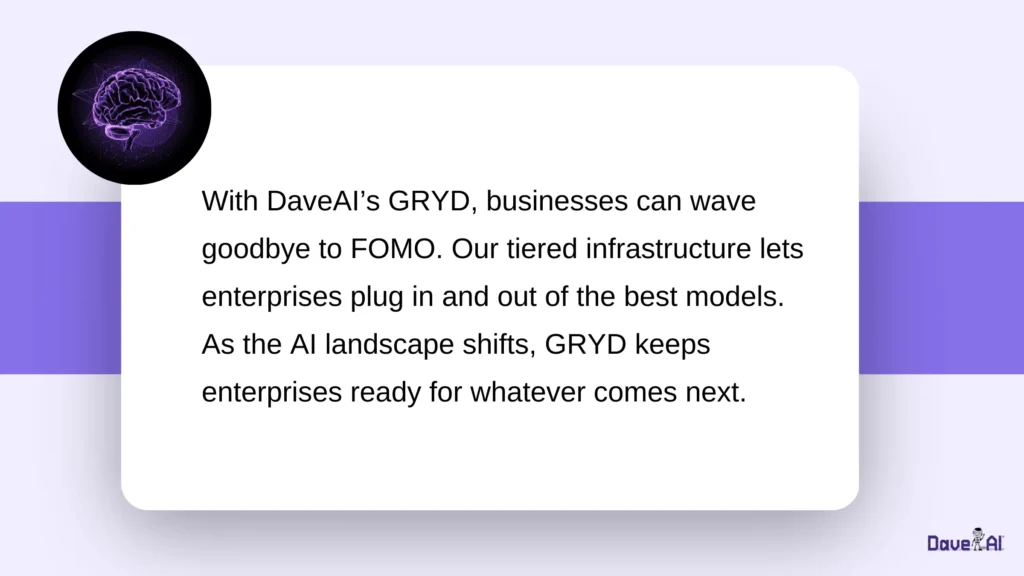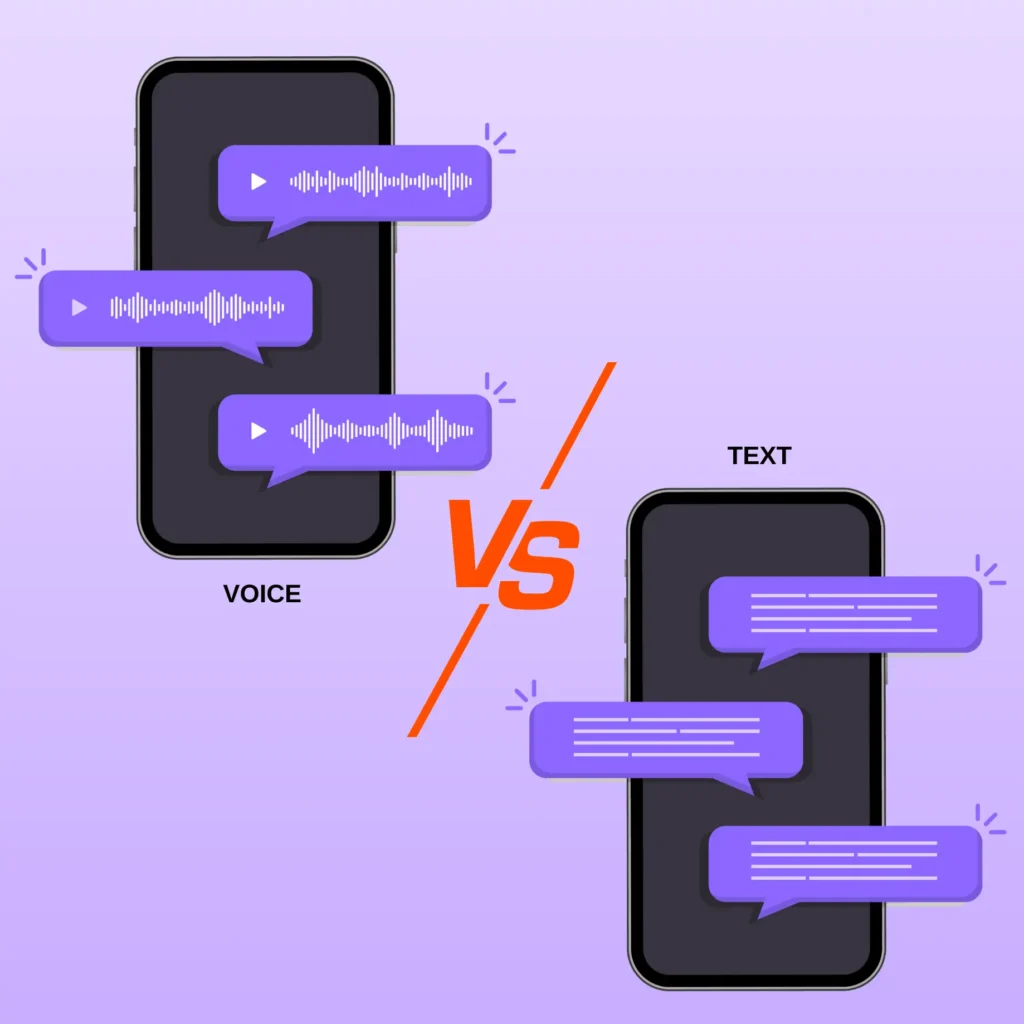Amid the explosive growth of artificial intelligence, DeepSeek AI has emerged as a superhero, capturing the attention of tech giants, startups, and researchers alike.
Founded in 2023, DeepSeek is into researching and developing new AI tools – especially open-source large language models (LLMs).Just two weeks after launching its first free chatbot app, the mobile app shot straight to the top of the U.S. app store charts, becoming an instant hit. DeepSeek’s AI has created a major impact in the artificial intelligence world, giving AI research giants like Meta and OpenAI a run for their money.
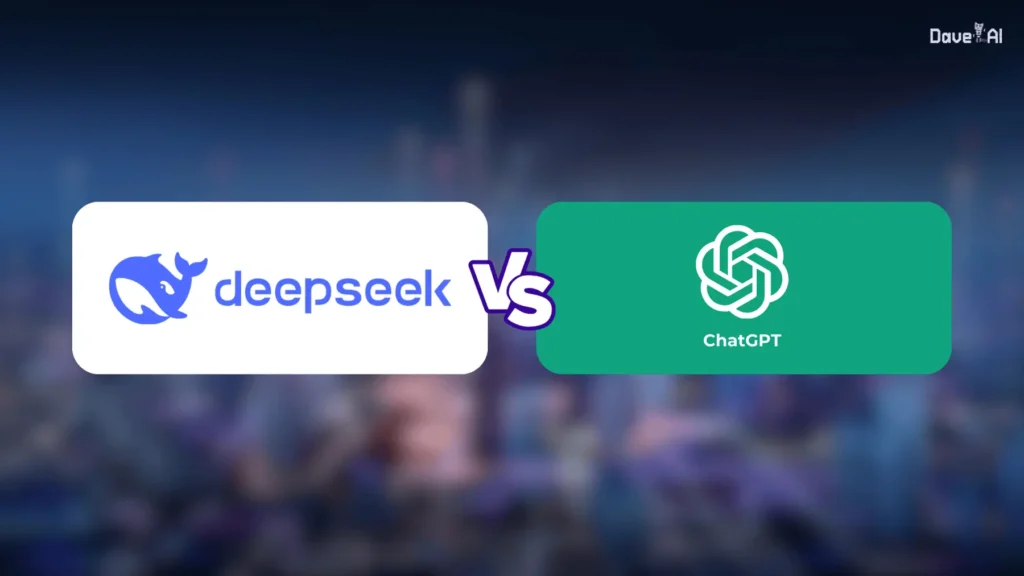
But that’s not all! The company’s latest AI model sent shockwaves through the tech world, sparking a global selloff that wiped out nearly $1 trillion in market value from giants like Nvidia, Oracle, and Meta. Talk about making an impact!
DeepSeek now boasts over 16 million users and counting. From diagnosing diseases with near-perfect precision to predicting market trends before they happen, this next-gen AI is already making waves across industries like healthcare, finance, and even creative arts.
Scroll down to find out what makes DeepSeek AI stand out in a sea of AI innovations and how it can level up your business.
What is DeepSeek AI?
DeepSeek AI is a rising star in the world of artificial intelligence, hailing from China as a startup under High-Flyer, a quantitative hedge fund based in Hangzhou.
The company specializes in developing open-source large language models (LLMs) designed to perform tasks like natural language understanding, reasoning, and problem-solving.
DeepSeek has developed a series of open-source AI models that compete with some of the world’s most advanced systems, including OpenAI’s ChatGPT, Anthropic’s Claude, and Google’s Gemini.
Their latest model, DeepSeek-R1, is a standout, delivering responses that rival OpenAI’s GPT-4. This model was trained at a fraction of the cost; While GPT-4 reportedly cost $ 100 million to train, DeepSeek−R1 was trained for less than $ 6 million. It used about a tenth of the computing power required for Meta’s comparable model, LLaMA 3.1.
At the helm of DeepSeek is Liang Wenfeng, the founder and CEO who also co-founded High-Flyer in 2016.
Since its inception, DeepSeek has rolled out a series of groundbreaking AI models, each pushing the boundaries of what’s possible:
- DeepSeek LLM (December 2023): Their first general-purpose large language model, boasting 67 billion parameters, came close to GPT-4 levels of performance. It was a clear signal that DeepSeek could compete with the heavyweights in broad language understanding.
- DeepSeek-V2 (May 2024): This model introduced game-changing innovations like Multi-head Latent Attention and the DeepSeekMoE architecture. With 236 billion total parameters (21 billion active), it dramatically improved inference efficiency and training economics.
- DeepSeek-Coder-V2 (July 2024): A powerhouse for developers, this model expanded coding capabilities with 236 billion parameters, a 128,000-token context window, and support for 338 programming languages. It’s a coder’s dream come true.
- DeepSeek-V3 (December 2024): A major milestone, this model featured 671 billion total parameters (37 billion active) and introduced advanced mixture-of-experts architecture and FP8 mixed precision training. It set new benchmarks for language understanding and cost-effective performance.
- DeepSeek-R1 (January 2025): The crown jewel of DeepSeek’s lineup, this model focuses on advanced reasoning capabilities. It’s trained using pure reinforcement learning and, thus, excels in complex problem-solving, particularly in mathematical reasoning, and stands shoulder-to-shoulder with the best in the field.
The Mission: Advancing AI for Everyone
DeepSeek’s ultimate goal is to push the boundaries of artificial intelligence. Its particular focus is on developing open-source large language models (LLMs) and achieving Artificial General Intelligence (AGI). Their mission is more than just commercialization; it’s about advancing the field through open-source research and collaboration.
In a world dominated by tech giants, DeepSeek is proving that innovation doesn’t require endless resources, just vision, determination, and a commitment to pushing the limits of what’s possible.
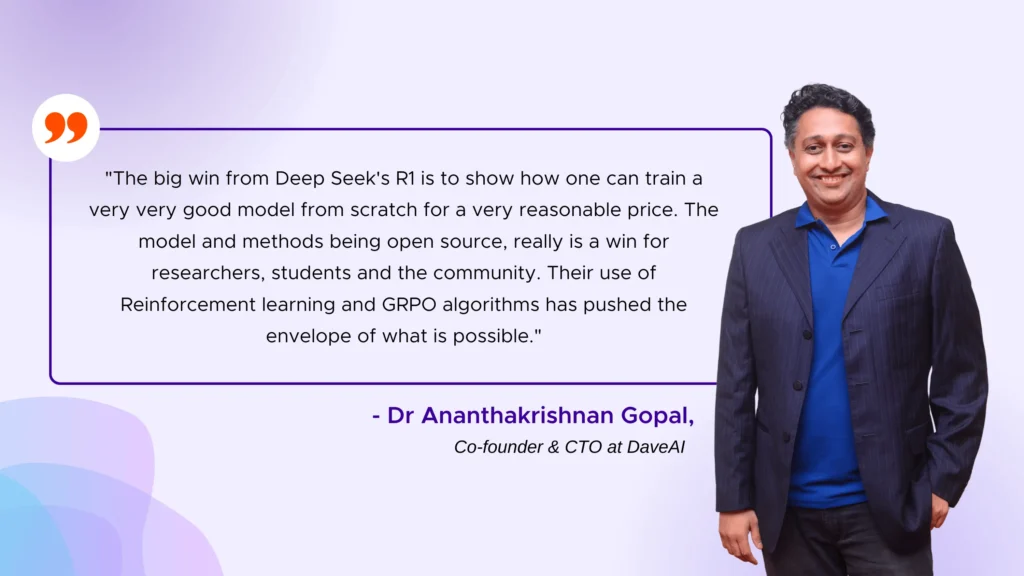
How Does DeepSeek AI Work?
DeepSeek AI is built on a foundation of machine learning and deep learning, two of the most advanced branches of AI.
The integration of machine learning and deep learning in DeepSeek AI helps it handle a myriad of tasks, from simple data analysis to complex decision-making processes. Machine learning algorithms are used to identify patterns in data, and allow the system to learn from data and improve over time. The deep learning models, such as neural networks, are employed to make sense of unstructured data, like text and images, and process such complex data structures .
DeepSeek AI utilizes a variety of algorithms, including convolutional neural networks (CNNs), recurrent neural networks (RNNs), and reinforcement learning algorithms. These algorithms work in tandem to enable the system to perform tasks such as image recognition, natural language processing, and predictive analytics with a high degree of accuracy.
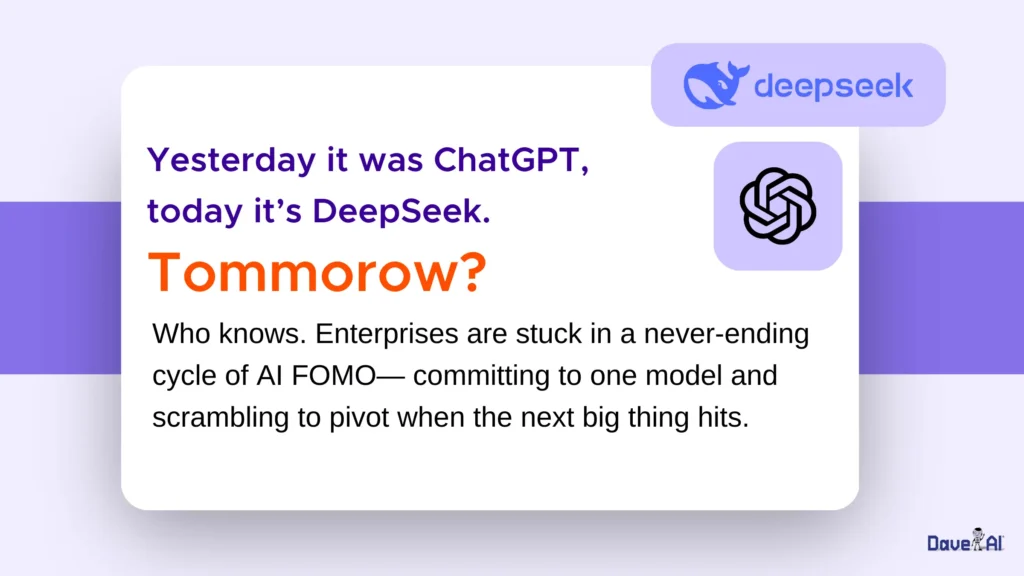
Key Features of DeepSeek AI
Some predominant and powerful capabilities of DeepSeek AI define its success and competence, which are listed below:
High Accuracy and Efficiency
One of DeepSeek AI’s standout features is its ability to deliver highly accurate results. The AI model achieves this precision through advanced algorithms and a strong training process that equips it to handle various tasks.
DeepSeek’s Mixture-of-Experts (MoE) architecture consists of multiple specialized sub-models, or “experts,” each trained to handle specific types of tasks or data. When a query is processed, the system intelligently selects and activates only the most relevant experts rather than engaging the entire model. This selective activation drastically reduces computational load, making the system faster and more energy-efficient.
The specialization of experts ensures that each task is handled by the most capable part of the model. This leads to higher accuracy and better performance across many tasks, from natural language processing to complex problem-solving. The system’s ability to adapt dynamically to different inputs also enhances its versatility.
Real-Time Processing Capabilities
DeepSeek AI is designed to process data in real-time, making it ideal for applications that require immediate responses. Whether it’s detecting fraudulent transactions in finance or diagnosing medical conditions in healthcare, DeepSeek AI can provide insights and recommendations in a matter of seconds.
Many major cities in China, including Shenzhen, Chengdu, and Guangzhou, have integrated DeepSeek into their traffic management systems. It analyzes traffic data from cameras, sensors, and GPS devices and provides real-time insights. This helps the cities optimize traffic light systems, reduce congestion, and improve public transport schedules. For instance, DeepSeek helps authorities reroute traffic to less congested areas in peak hours, cutting commuters time.
Scalability and Adaptability in Various Industries
By activating only a small fraction of the model’s parameters at any given time, DeepSeek’s MoE architecture minimizes resource consumption. This makes it highly scalable, allowing the model to grow in complexity without a proportional increase in computing costs. It’s particularly beneficial for businesses and applications that require real-time processing or operate under limited computational resources.
Moreover, DeepSeek’s MoE architecture improves over time through a trial-and-error learning process. It mimics human learning, allowing the model to refine its performance and adapt to new challenges.
Production units in Shenzhen, Suzhou, and Dongguan use DeepSeek for higher machinery efficiency. The AI system analyzes sensor data from manufacturing lines, and predicts when equipment can possibly fail, encouraging timely maintenance. This has minimized unplanned downtime by over 30% in a few factories, increasing their productivity and curtailing cost.
Cost-Effective AI Technology
MoE architecture’s efficiency helps lower operational costs. DeepSeek can deliver high-quality AI capabilities without the need for massive computational infrastructure, which makes it an affordable option for both enterprises and individual users.
Outperforming Traditional AI
Traditional AI models often struggle with complex tasks, but DeepSeek AI thrives on them. For instance, in natural language processing (NLP), DeepSeek AI is being used to translate languages with near-human accuracy.
Another good example would be DeepSeek-R1 performing better than Open AI in mathematical reasoning tasks.
DeepSeek AI scores 79.8%, against OpenAI o1-1217’s score of 79.2%, on AIME 2024. The test checks advanced multi step mathematical reasoning.
In MATH-500, DeepSeek-R1 outperforms OpenAI o1-1217, achieving a score of 97.3% compared to 96.4%. This assessment evaluates various high-school-level math problems that demand thorough and detailed reasoning.
DeepSeek AI vs. Other AI Models
Although we have competent AI models in the market already, DeepSeek-V3 takes the lead with 75.9% accuracy, outperforming competitors like GPT-4-0513 (73.3%) and Claude-3.5 (72.6%).
DeepSeek AI vs. OpenAI’s ChatGPT
While DeepSeek AI excels in delivering accurate responses, it doesn’t yet match ChatGPT’s advanced features. ChatGPT offers AI image generation, tool integrations (like Canvas), and a multimodal interface for tasks like image analysis. It also supports voice interactions, whereas DeepSeek remains text-only.
In terms of performance, DeepSeek-V3 and R1 hold their own against ChatGPT, particularly in answering questions and generating code. Both provide reliable, accurate responses and support web searches for up-to-date information.
DeepSeek’s standout advantage is its cost-effectiveness: the chatbot is entirely free, and its APIs are significantly cheaper. ChatGPT, on the other hand, requires payment for advanced features, making DeepSeek a compelling choice for users seeking a no-frills, cost-free AI experience.
DeepSeek AI vs. Google Gemini
Google Gemini is a strong contender, but DeepSeek AI edges ahead with its real-time processing and adaptability. Its focus on scalability and efficiency makes it a more versatile option for businesses integrating AI into their workflows.
DeepSeek AI vs. Anthropic Claude
While Anthropic Claude is praised for its ethical focus and transparency, DeepSeek AI goes further by using advanced algorithms to reduce bias and enhance fairness. Its real-time processing also gives it an edge in applications requiring instant decision-making.
What Makes DeepSeek Unique?
DeepSeek’s Mixture-of-Experts (MoE) architecture is a game-changer. MoE optimizes efficiency and performance by dynamically activating only the most relevant parts of the model for a given task, rather than using the entire network for every query. Moreover, its trial-and-error learning process mirrors human learning, bringing rapid advancements and solidifying its reputation as a cutting-edge AI.
However, there are some shortcomings of DeepSeek, too. For instance, DeepSeek-R1 faces difficulty in readability and language coherence, even though the latest model has improved its reasoning performance.
DeepSeek models also have algorithm bias. They have issues with mixing languages, even if they perform better in several languages, as compared to other models. It brings up the concern of fairness in language.
Why DeepSeek AI is the Next Big Thing in AI
DeepSeek is redefining how AI is developed and applied. It brings a fresh approach to model training, fine-tuning, and adaptability, making it a strong contender against established AI systems like OpenAI’s GPT, Google’s Gemini, and Anthropic’s Claude.
What makes it disruptive?
- Advanced Architecture: DeepSeek AI employs novel deep learning techniques that optimize efficiency while reducing computational costs, making it more accessible for businesses.
- Open-Source Edge: One of DeepSeek’s defining features is its commitment to open-source research. The DeepSeek-R1 model, for instance, was trained on 87% code and 13% natural language, and it’s freely available for both research and commercial use. Unlike proprietary models, DeepSeek AI offers transparency and flexibility, encouraging researchers and developers to build on it, leading to faster innovation.
- Multimodal Capabilities: The model is designed to process text, images, and potentially even video, pushing the boundaries of AI’s ability to understand and generate complex content.
The rise of open-source AI models like Meta’s LLaMA, for instance, has already shown how open accessibility fuels rapid adoption. DeepSeek AI’s approach could similarly disrupt the AI market by offering high-performance capabilities without the barriers of closed systems, at a very low cost.
Imagine an AI-powered assistant that helps researchers analyze scientific papers, summarize key findings, and suggest hypotheses. DeepSeek AI’s advanced comprehension could make it an indispensable tool for academia and R&D.
AI’s biggest win is its ability to solve complex problems, and DeepSeek AI excels in this area by offering:
Better Context Understanding: DeepSeek AI is trained with enhanced contextual awareness, making it more reliable for tasks that require deep comprehension, such as legal analysis and financial forecasting.
Improved Code Generation: Developers can use DeepSeek AI for writing, debugging, and optimizing code with greater accuracy than many existing models.
Adaptive Learning: Unlike static models, DeepSeek AI continuously improves through reinforcement learning and user feedback.
Moreover, DeepSeek AI isn’t just theoretical, it’s already being tested and implemented in various sectors. Here’s how it’s making an impact:
- In Healthcare, DeepSeek AI can assist doctors with medical diagnoses by analyzing patient data and suggesting possible conditions. An advanced AI system like this incorporated in a hospital could detect early signs of diseases like cancer from radiology scans, reducing human error and improving patient outcomes.
- DeepSeek AI, in the Finance sector, can enhance fraud detection by identifying unusual transaction patterns more accurately than traditional models. A bank using DeepSeek AI, for example, could flag fraudulent credit card transactions in real-time, minimizing financial losses.
- Another successful implementation is in customer service. Companies using DeepSeek AI for customer support could provide faster and more personalized responses, improving user satisfaction.
Applications of DeepSeek AI in Various Industries
Many industries are using DeepSeek AI to their advantage and streamlining their processes successfully. Here are some examples:
Healthcare: Medical Diagnostics, Predictive Analysis
In healthcare, DeepSeek AI is being used to improve medical diagnostics and predictive analysis. The system’s ability to process large amounts of data in real-time allows it to identify patterns and trends that can help doctors make more informed decisions. This has the potential to revolutionize patient care and improve outcomes.
Hospitals in major cities like Shanghai, Beijing, and Guangzhou are utilizing DeepSeek to observe medical imaging, like CT scans, MRIs, and X-rays. The benefits they got?
- The AI system’s accurate anomaly detection has enhanced the early diagnosis of diseases like cancer, neurological disorders, and cardiovascular conditions.
- Patient waiting times are also shortened and treatment outcomes are way better with diagnosis process automation.
Finance: Fraud Detection, Algorithmic Trading
In the finance industry, DeepSeek AI has become a perfect tool for fraud detection and algorithmic trading. The system’s real-time processing capabilities enable it to detect fraudulent transactions as they occur, and its advanced algorithms optimize trading strategies to maximize returns.
CBC, Ping An Bank, and China Construction Bank, leading Chinese finance institutions, use DeepSeek to analyze massive transaction-data volumes and pinpoint unusual patterns or suspicious behavior. For instance, DeepSeek flags transaction spikes or unauthorized account access, saving the banks millions annually and protecting customer assets.
Education: Personalized Learning, AI Tutors
DeepSeek AI is also making a leap in the education sector. The system’s ability to adapt to individual learning styles and provide real-time feedback makes it an invaluable tool for educators and students alike.
Educational institutions like TAL Education and VIPKid use DeepSeek to personalize learning for millions of students. The AI suggests relevant learning materials to students, and tracks progress by analyzing their performance data and engagement behavior.
Cybersecurity: Threat Detection, Automated Security Responses
In cybersecurity, DeepSeek AI helps enhance threat detection and automate security responses. The system’s ability to process enormous data in real-time allows it to spot potential threats before they can cause harm.
Tech companies like Huawei, Tencent, and Baidu have DeepSeek AI integrated to track network activity and detect any cybersecurity threats. DeepSeek can identify unusual traffic patterns and possible vulnerabilities in real-time. This feature helps companies react proactively to malware attacks or data breaches. For instance, Tencent credits DeepSeek for saving it from multiple large-scale phishing attacks.
E-commerce & Retail: Customer Insights, Personalized Recommendations
DeepSeek AI, in these sectors, allows businesses to gain deeper customer insights and give personalized recommendations. The system can analyze customer behavior and preferences in real-time to meet customers’ specific needs, improving customer satisfaction.
Renowned eCommerce platforms like Pinduoduo, JD.com, and Taobao are using DeepSeek to enhance customer experiences. It generates personalized product suggestions by observing user behavior, purchase patterns, and search history. For example, a person buying sportswear will see complementary accessories, which increases the chances of getting additional sales and revenue.
The Role of Deep Learning in DeepSeek AI
Deep learning is primary in enhancing the decision-making capabilities of DeepSeek AI. Using neural networks, the system can process complex data structures and make sense of unstructured data, such as images and text. This allows DeepSeek AI to provide more accurate and insightful recommendations.
Neural networks are at the heart of DeepSeek AI’s deep learning capabilities. These networks are designed to mimic the human brain, allowing the system to learn from data and improve over time. The use of neural networks enables DeepSeek AI to handle tasks that would be difficult or impossible for traditional AI models.
DeepSeek AI’s deep learning capabilities are being used in a variety of applications, from image recognition to natural language processing. For example, in healthcare, the system is being adopted to analyze medical images and find potential issues, and in finance, it’s applied to analyze market trends and optimize trading strategies.
The Future of AI with DeepSeek
DeepSeek might be proving something groundbreaking: you don’t need endless resources to create cutting-edge AI. You’ll see more powerful AI models being built with fewer resources as companies crack the code on making, training, and running these models way more efficiently.
For years, the AI game has been ruled by US tech giants, so much so that even Donald Trump called DeepSeek’s rise “a wake-up call” for the American tech industry. It’s a sign that the playing field is leveling, and innovation isn’t just for the big players anymore.
But here’s where it gets even more interesting. DeepSeek AI could be the start of a bigger shift in how AI works:
Decentralized AI: Imagine AI models like DeepSeek moving toward peer-to-peer frameworks. This isn’t just about efficiency; it’s about security as well. By spreading the load across networks, you could have AI that’s smarter and also harder to hack or control.
AI-Powered DeFi Platforms: In the world of decentralized finance (DeFi), AI could take the wheel on everything from lending to yield farming and risk assessments. It could automate the nitty-gritty so humans can focus on the big picture.
Hybrid AI-Human Trading Models: The future of trading might not be just AI or just humans; it could be both. Imagine AI crunching the numbers and spotting trends, while humans bring their intuition and experience to the table. Together, they could create strategies that are sharper and more adaptable than ever.
DeepSeek AI is a glimpse into a future where AI is more accessible, more secure, and more collaborative.
Challenges and Limitations of DeepSeek AI
DeepSeek AI, like other AI models, is not perfect and has some potential barriers.
Ethical Concerns and AI Bias
As a Chinese company, DeepSeek faces scrutiny over potential biases in its AI models. Critics have raised questions about whether the technology might inadvertently reflect state-imposed censorship or restrictions on free expression, particularly when it comes to sensitive topics like geopolitics.
High Computational Requirements
DeepSeek AI system’s advanced algorithms and real-time processing capabilities require significant computational resources, which could pose challenges for organizations with limited resources.
Data Privacy and Security Risks
Many experts and the general public fear that China’s government could misuse the AI system for foreign influence operations, surveillance and creation of cyberweapons, and spreading disinformation.
Moreover, DeepSeek has shown some severe security vulnerabilities. The alarming incident was related to an unprotected ClickHouse database discovered by Wiz’s cybersecurity researchers at Wiz. The exposed database had over 1 million log entries, containing chat histories, sensitive system logs, API keys, and all accessible without authentication. This security loophole meant that malicious users could have easily accessed and modified user data, leaving the company at a risk of data theft, manipulation, and regulatory breach.
How Businesses Can Leverage DeepSeek AI
Businesses that want to take advantage of the new-age DeepSeek AI must begin with a clear strategy in mind.
Define the Problem Clearly
The first step is pinpointing the exact problem the AI system will address. This means identifying the business goal and the specific task the AI will handle. It’s also important to establish the metrics that will measure the AI’s performance before diving into implementation. Without a clear problem definition, even the most advanced AI won’t deliver meaningful results.
Prioritize Data Quality
The success of any AI system hinges on the quality of the data it’s trained on. Think of data as the foundation; if it’s flawed, the AI’s decisions will be too. Accurate, relevant, and consistent data is essential for producing reliable outcomes. Poor-quality data can lead to inaccurate predictions, which defeats the purpose of using AI in the first place.
Get the Right Model
Selecting the AI model that best aligns with your project’s needs is a critical decision. Every model has its strengths and weaknesses, so it’s important to evaluate factors like the type of data you’re working with, the complexity of the problem, the availability of labeled data, and the computational resources required. The right model can make all the difference in achieving your goals.
Seamlessly Integrate with Existing Systems
One often-overlooked aspect of AI implementation is integration. Incorporating an AI system into your current workflows and processes isn’t always straightforward; it requires careful planning. The AI’s predictions need to be applied in the right context, and the system should enhance, not disrupt, your operations. A smooth integration ensures that the AI adds value without causing unnecessary friction.
Case studies of companies using DeepSeek AI
There are already many companies that are already using DeepSeek AI for enhancing their operations.
For example, DeepSeek is the backbone in making autonomous vehicles by firms like BYD, NIO, and Geely. The AI processes data from cameras, sensors, and LIDAR systems for better navigation, quickly detecting obstacles, and predicting potential hazards. All these actions give users more efficient and safer autonomous driving experiences, even in the most complex urban environments.
Pharmaceutical firms like WuXi AppTec and Fosun Pharma are using DeepSeek to accelerate drug discovery. The AI system predicts molecular interactions and spots the right compounds for drug development. For instance, in the early COVID-19 phases, DeepSeek scanned millions of molecular combinations to find potential antiviral drugs, which significantly shortened the R&D timeline.
Furthermore, telecommunication providers like China Mobile, China Unicom, and China Telecom use DeepSeek-powered chatbots to serve customers better. These chatbots tackle millions of customer queries daily, providing accurate and fast responses on billing, account management, and technical support. China Telecom, for instance, cut customer service wait times by nearly 40% through DeepSeek AI.
Best Practices For AI Implementation
When implementing DeepSeek AI, it’s important to follow best practices to ensure success. This could include:
- starting small with a pilot project, and running A/B tests to see potential
- gathering feedback from users to identify room for improvements
- continuously monitoring and optimizing the system for better performance
Organizations must also consider the ethical implications of implementing AI in business and ensure that the system is fair, transparent, and unbiased. Plus, companies must consider the possible impact of the AI system on society and the environment.
Security & Ethical Considerations in DeepSeek AI
As AI’s popularity is growing, it is becoming all the more crucial to ensure fairness, transparency, and compliance with ethical standards is critical. DeepSeek AI prioritizes security and responsible AI practices to win users’ trust and prevent unintended consequences.
Bias and Fairness in AI Algorithms
AI models, including DeepSeek AI, learn from large datasets, which means they can inadvertently have biases from the data. If not addressed, these biases may transpire into unfair treatment in areas like hiring, lending, and law enforcement.
DeepSeek AI, for instance, incorporates bias mitigation techniques to ensure a fair hiring process by focusing on skills instead of demographic indicators like gender or ethnicity.
Transparency and Explainability in AI Decisions
A major challenge with AI is the “black box” problem; many models make decisions without explaining their reasoning.
Doctors using AI for diagnosing diseases, for instance, need to know why an AI recommends a particular diagnosis. DeepSeek AI gives them detailed explanations, like highlighting specific patterns in MRI scans or lab reports that were the basis of its conclusion.
Government Regulations and Policies on AI Ethics
As AI continues to evolve, you’re likely to see more regulations and policies for ensuring that AI systems are used ethically and responsibly. For instance, the European Union’s AI Act categorizes AI systems based on risk levels, requiring transparency and accountability for high-risk applications.
DeepSeek AI adheres to these guidelines, ensuring its applications in healthcare, finance, and law meet regulatory standards.
Conclusion: Is DeepSeek AI the Future of Artificial Intelligence?
DeepSeek AI shows a significant leap forward in the field of artificial intelligence. Its advanced algorithms, real-time processing capabilities, and adaptability render it an incredibly powerful tool for a plethora of applications.
As we move into 2025, DeepSeek AI is ready to shape the future of AI. It has the ability to deliver more accurate, efficient, and scalable solutions for businesses than its competitors like Open AI–ChatGPT, Anthropic Claude, and more. And with the AI system continuously evolving, we can expect to see even more advancements in DeepSeek AI’s capabilities.
FAQs About DeepSeek AI
DeepSeek AI’s unique MoE architecture differentiates it, offering advanced algorithms, real-time processing capabilities, and adaptability across various industries.
DeepSeek AI follows an open-source approach, making its LLMs available for public use and development. It allows businesses, researchers, and developers to customize and integrate its AI models into their existing systems.
The modular nature of the MoE architecture allows for more precise control over how the model processes information. Consequently, DeepSeek minimizes bias and enhances fairness in its outputs by incorporating advanced algorithms.
The modular nature of the MoE architecture allows for more precise control over how the model processes information. Consequently, DeepSeek minimizes bias and enhances fairness in its outputs by incorporating advanced algorithms.
Industries such as healthcare, finance, education, cybersecurity, and e-commerce are expected to benefit significantly from DeepSeek AI.
DeepSeek AI is expected to enhance its large language models (LLMs) with better reasoning, efficiency, and multilingual capabilities. Future developments may include better AI training methods, expanded open-source contributions, and deeper industry integrations to support businesses in automation, data analysis, and decision-making.
Shashank Mishra
Shashank is an experienced B2B SaaS writer for eCommerce, AI, productivity, and FinTech tools. His interests include reading, music, poetry, and traveling.
